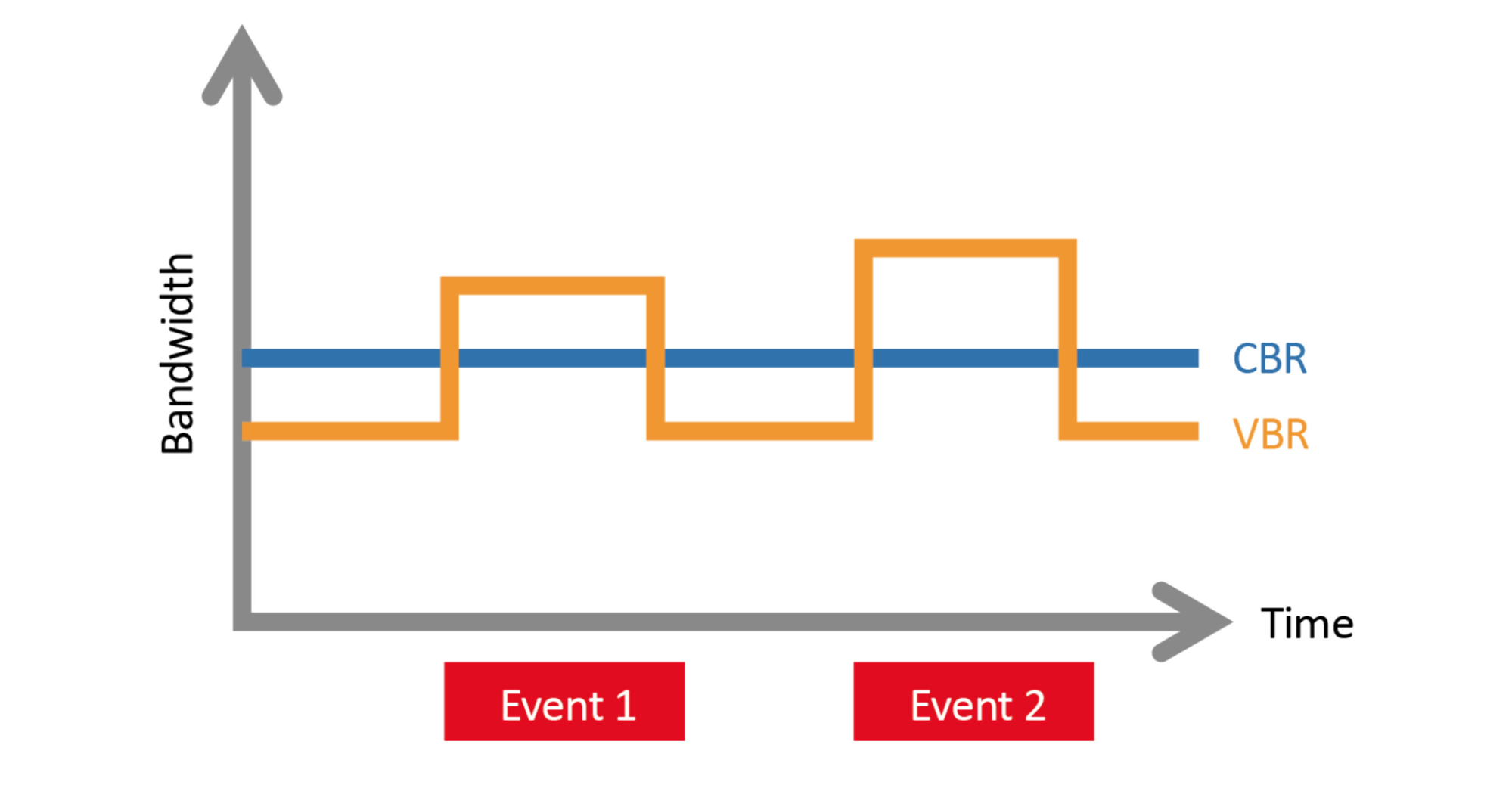H
ave you ever been watching a video or live stream and experienced buffering, stuttering, or diminished video quality? If you have, you may have been encountering a video bitrate issue. But what is video bitrate? And what does bitrate mean? We’re going to answer those questions by examining video bitrates, their best speeds, best uses, and more. By the end, you’ll know what bitrate means and how to effectively use it on your own.
What is a Good Video Bitrate?
What is bitrate in video used for?
Video bitrate is used to calculate the best potential rate of data transfer for videos of different resolutions and frame rates. This next video quickly explains the fundamentals of bitrate and how it affects video transfer speed.
What is Bitrate in Video? • Video Bitrate Explained in 1 Minute by Holotna – 3D Graphics
Perhaps the biggest issue with bitrate in video is that live playback, or live streamed content, must have a certain level of internet speed to properly display the “correct” bitrate.
That can be a bit tricky… but before we get too deep into the technical details, let’s properly answer the question “what is video bitrate?”
VIDEO BITRATE DEFINITION
What is video bitrate?
Video bitrate is the rate of data that’s encoded in a video (typically calculated in megabits per second, or Mbps). Low video bitrates can cause buffering, stuttering, and or diminished video quality. High video bitrates aim to maintain high resolution, but come at the cost of increased file size.
Common Video Bitrates:
- 4k resolution: 30-60+ Mbps
- 2k resolution: 20-30 Mbps
- 1080p resolution: 10-15 Mbps
What's the Best Bitrate?
How does bitrate affect video quality?
Bitrate affects video quality both in terms of render and live playback. For example, a 4k video at 60 frames per second that’s encoded at 4 Mbps is not going to look as good as one that’s encoded at 40 Mbps.
In video editing programs, such as Final Cut Pro and Premiere Pro, you can choose to encode videos at certain bitrates when you render them out.
Here are YouTube’s recommended video bitrates for matching resolutions and frame rates:

What is Bitrate in Video? • Best Video Bitrate (According to YouTube)
However, if you’re watching a YouTube video via live playback, and do not have the internet speed needed to maintain the proper bitrate, you may encounter stuttering, buffering, and or diminished video quality.
For more detailed analysis on video bitrates, check out this great video from Kellan Reck:
What is Bitrate in Video? • Video Bitrate: An Easy Overview
Video bitrates have an enormous influence on the quality of the videos we consume. For example: as noted, DVDs typically display video at 480p with a bitrate between 4 Mbps and 8 Mbps. That’s not great! Especially to those used to high-definition video.
Conversely, 4k blu-ray discs can display 4k video with a bitrate between 72 and 144 Mbps. Live streamed content typically displays 4k video at half the maximum bitrate; however, things are changing rapidly as some streaming services are offering higher bitrates to customers than others.
What Bitrate Should I Record At?
The future of video bitrate
As internet speeds continue to get faster and faster, video compression is becoming less and less of an issue. What is the point of video compression? Well, quite simply, to lower the bitrate so that the video file size gets smaller and easier to download.
Additionally, there are other strategies for improving video bitrates. One effective strategy is to use variable bitrate instead of constant bitrate. Variable bitrate lowers the bitrate during moments of static images so that the encoding process will take up less data.
Here’s a good graph to demonstrate the effects of VBR.

What is Bitrate in Video? • Constant Bitrate vs. Variable Bitrate via Vivotek
In terms of video playback, adaptive bitrate and multi-bitrate offer additional solutions. Adaptive bitrate changes to match the end-user’s internet connection in real-time, while multi-bitrate chooses the best bitrate at the beginning, and will buffer if internet speeds slow down.

What is Bitrate in Video? • Adaptive Bitrate vs Multi-Bitrate by Muvi
In the future, artificial intelligence will likely eliminate the problems of video bitrate altogether. Don’t believe me? Check out this video from NVIDIA:
What is Video Bitrate? • The Future of AI Bitrate by NVIDIA
Video codecs of the future will likely leverage image-based-reconstruction through artificial intelligence to “clean up” low bitrate video in real-time. This will allow users with slow internet speeds to see videos at their intended bitrate (and resolution) without needing to take up the previously-required bandwidth.
Up Next
What is Frame Rate?
We briefly touched on “frame rate” in our examination of video bitrates – but there’s a lot more to the term than what we went over here. Want to learn more about frame rates? Check out our next article of frame rates where we break down examples from Get Out, slow-motion video, and more. By the end, you’ll know what frame rate is and how to effectively utilize it in your own work.
Up Next: A Filmmaker’s Guide to FPS →
Showcase your vision with elegant shot lists and storyboards.
Create robust and customizable shot lists. Upload images to make storyboards and slideshows.
